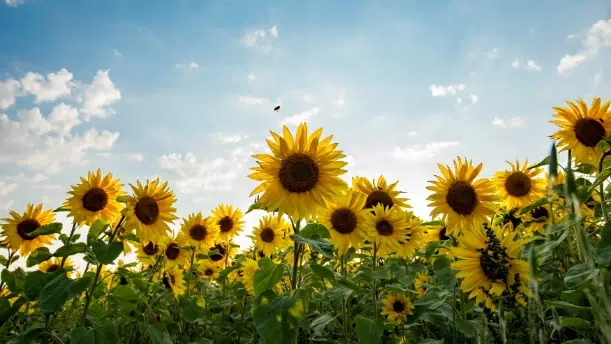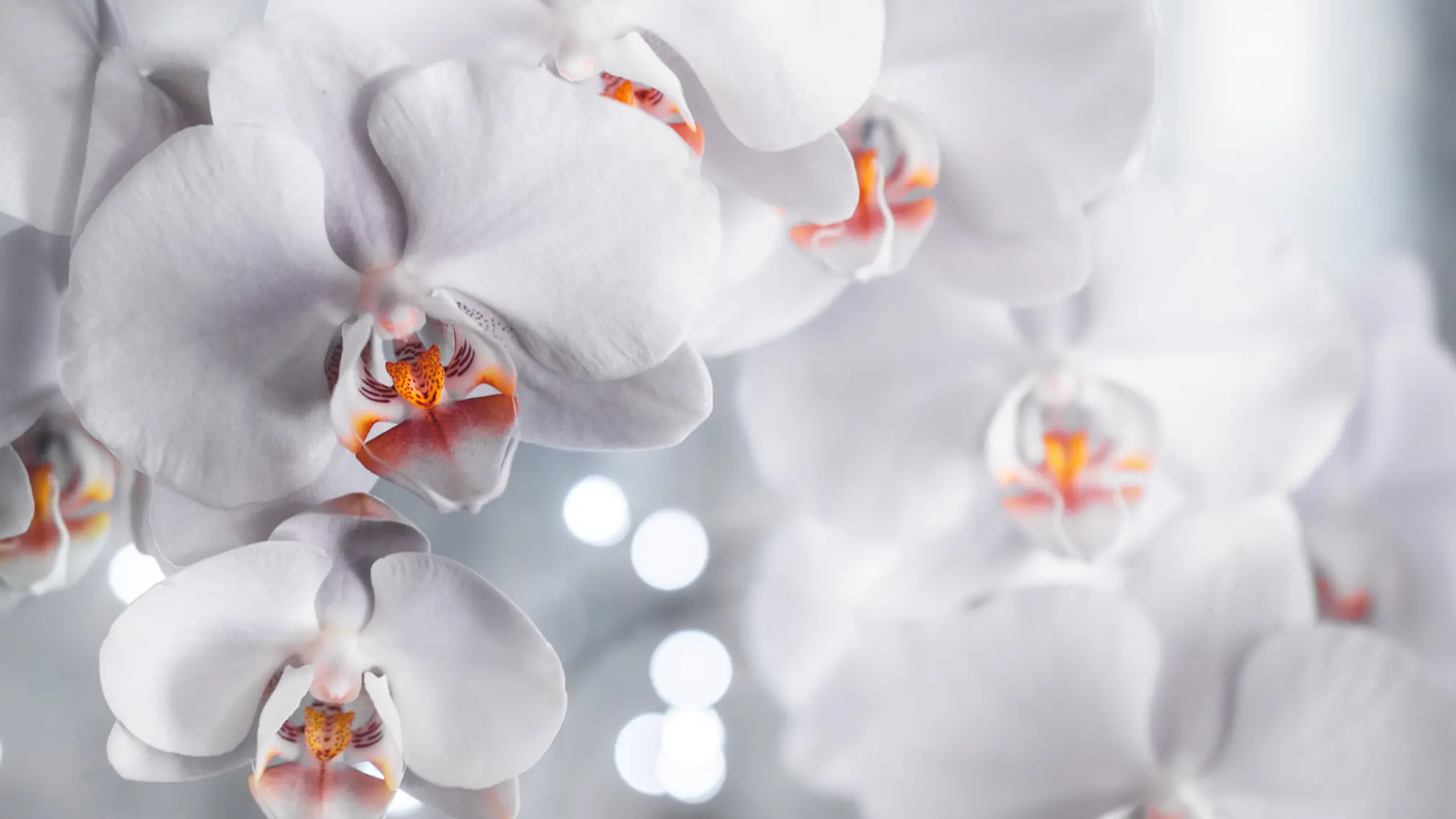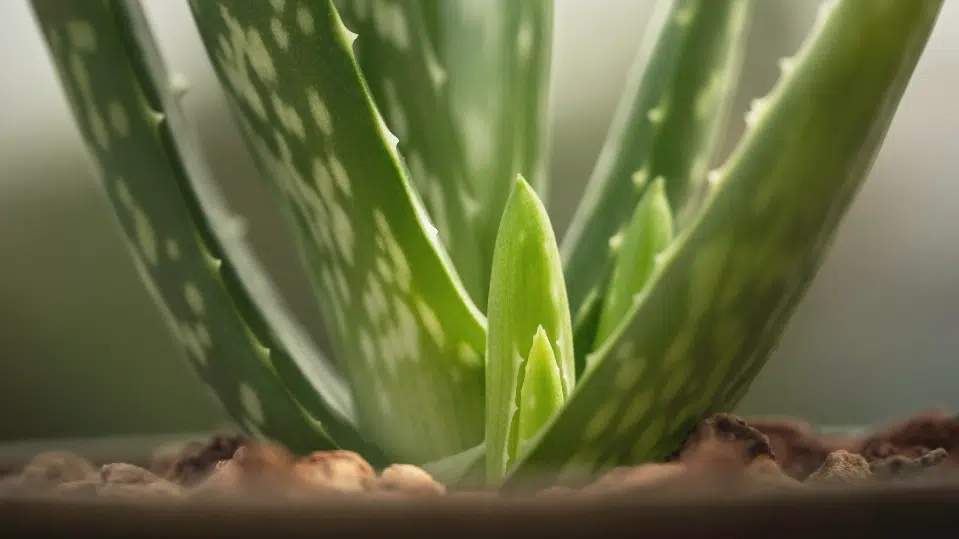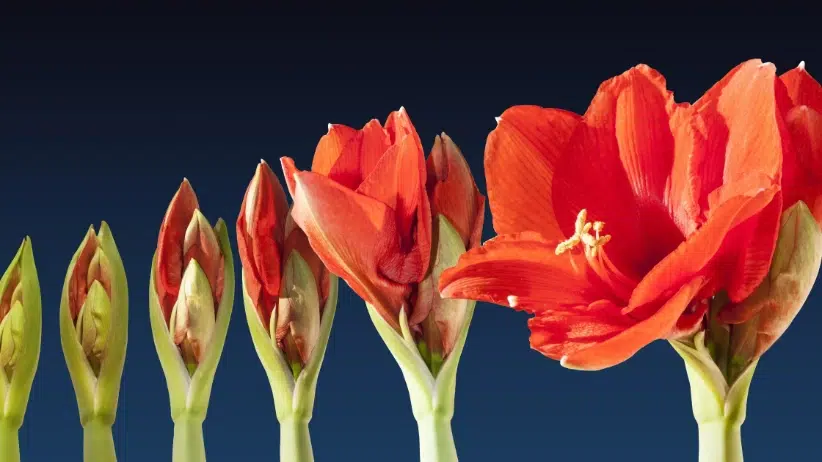Sunflowers (Helianthus annuus) are pretty, bright yellow flowering plants known for their striking appearance and large, disk-like flower heads. It is an annual plant and belong to the Asteraceae family. Helianthus is native to North America, however it has been widely cultivated in many other parts of the world. Including Ukraine, Argentina and The Netherlands. Sunflowers are used in many purposes from horticulture to food production. The genus Helianthus consists of about 70 different species, a common sunflower is the most well-known and widely cultivated species of sunflower.
A common sunflower characteristic
| Latin name | Helianthus annuus |
| Plant name | Sunflower, common sunflower |
| Family | Compositae (Asteraceae) |
| Growth height max. | 2-4 m |
| Flowering month | Seasonal flower for July-October |
| Location | Sun |
Helianthus annuus or Common Sunflower is an annual herb that can reach up to 4 m in height. The leaves are broad and a bit ovate, alternately arranged on the stem. The stem is thick and hairy and can grow from 1 to 4 metres tall. They can have a diameter of up to 5 cm and can support flower heads over two kilograms. Powerful right? The characteristic feature of sunflowers is their inflorescence, which is a composite flower head known as a capitulum. The head is made up of hundreds or even thousands of individual flowers arranged in a spiral pattern. The outer perimeter consists of ray flowers that are typically yellow and petal-like, while the center contains disk flowers that are tubular and dark in color.
Types of sunflowers
Here are some of the most common types of sunflowers:
- Common sunflower (Helianthus annuus): Often grown for its edible seeds and as a decorative plant in gardens.
- Dwarf sunflowers: Popular for gardens with limited space or for growing in pots. This variety is smaller than the common sunflower.
- Giant sunflowers: Produces large flower heads, sometimes more than 30 centimetres in diameter.
- Red sunflowers: Although less common than the yellow varieties, there are also sunflowers with red petals.
- Orange sunflowers: Like red sunflowers, orange varieties also add a colourful dimension to garden landscapes.
- Double flower sunflowers: These varieties have extra petals, giving them a fuller appearance than traditional single flower sunflowers. Like amaryllis has both single-flowered and double-flowered varieties.
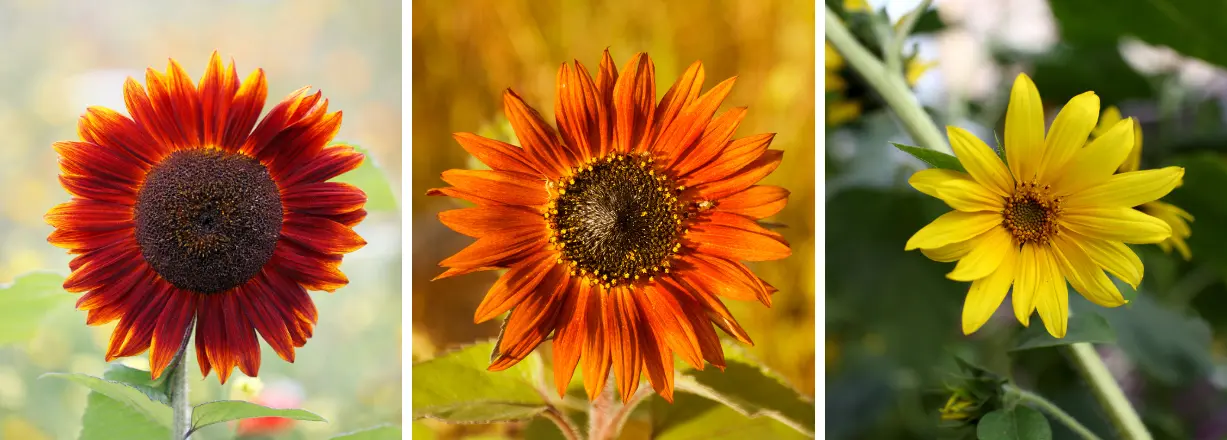
Sunflowers season and availability
As an annual plant, Helianthus annuus completes its entire life cycle in a single growing season. It starts as a seed, grows into a mature plant, produces flowers, sets seeds, and then dies off in the autumn or winter. When is sunflower season then? The high season of sunflower is from July to October. During this period the sunflowers are available in multiple sizes, lengths and from many different growers.
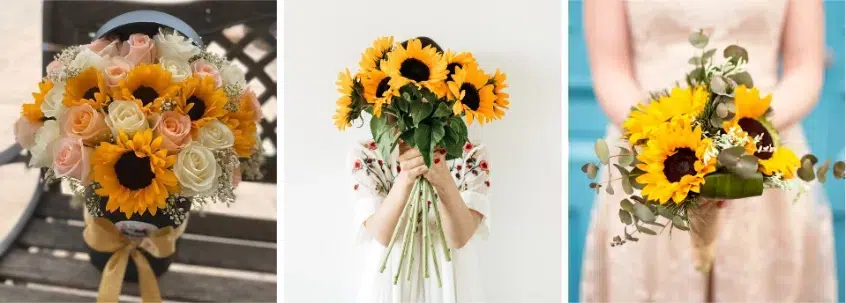
The shortest available are just 40cm tall flowers, the selection goes up to 90 cm massive and dashing sun flowers. They are ideal for bouquets or other decoration purposes, creating a summery, happy and bohemian atmosphere. A completely opposite feeling than example charmante Vip rozen. Or romantic roses like Red Naomi.
For a more comprehensive selection, please contact one of Verbeek & Bol's representatives. If you do not yet have a customer account, we can create one for you. This will give you access to the entire flower export range. ⬇️
Send a message
Did you know this about Helianthus annuus?
- The record height of a sunflower is a whopping 9.17 metres and was grown by Hans-Peter Schiffer (Germany).
- The sunflowers have and ability to track the movement of the sun across the sky during the day. This fascinating aspect is known as heliotropism. This means that young sunflower flower buds and young leaves face east in the morning and follow the sun as it moves west throughout the day, ultimately returning to face east again by evening.
- They were cultivated in North America as far back as 3000 BCE. Around 1500 they were exported to the rest of the world by Spanish conquistadors.
- Scientists call Helianthus hyperaccumulators. This means they have ability, to absorb high concentrations of toxins in their tissues. Just like some air-purifying plants.
- Sunflowers have cultural significance in various societies and are used as symbols of happiness, positivity and long life. Their striking appearance and vibrant colours have also inspired many artists. Curious about the meanings of other flowers? read here lisianthus flower meaning.
- At the end of the life cycle, when you have enjoyed sunflowers at home. You can actually still utilize them: Once the flower heads are empty of seeds, they can be converted into disposable scrubbing pads for jobs too tough for your cleaning tool. A free recycling tip 😉
Want to read more about plants and flowers? Check out our other articles, e.g. Aloë Vera plant & Olea Europaea.
